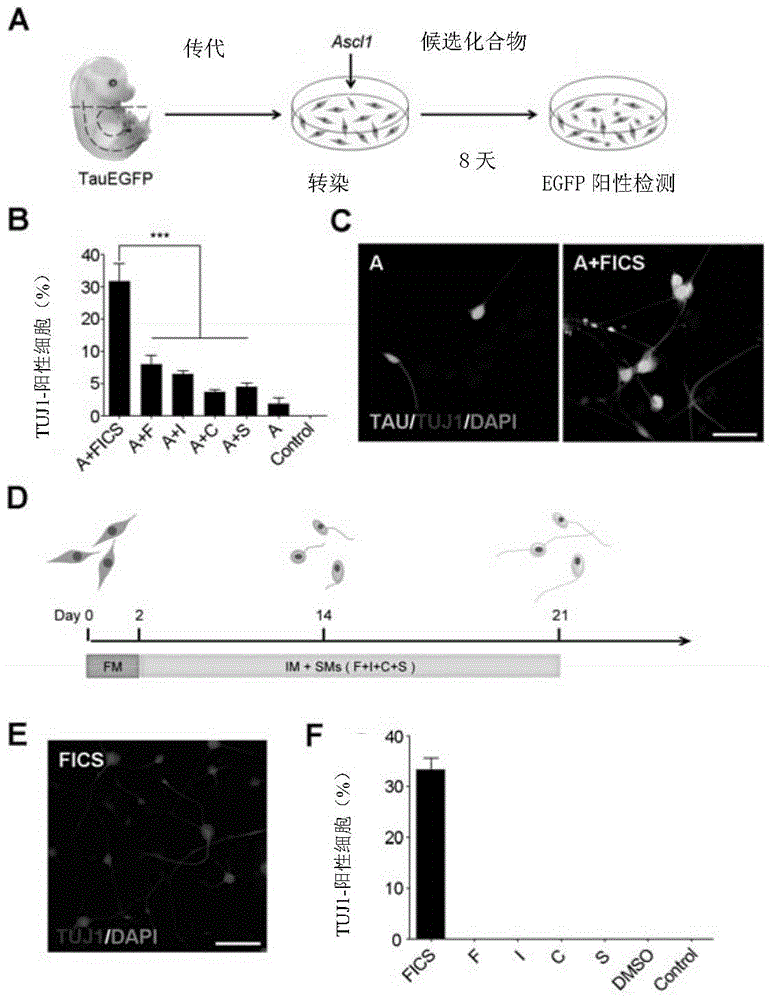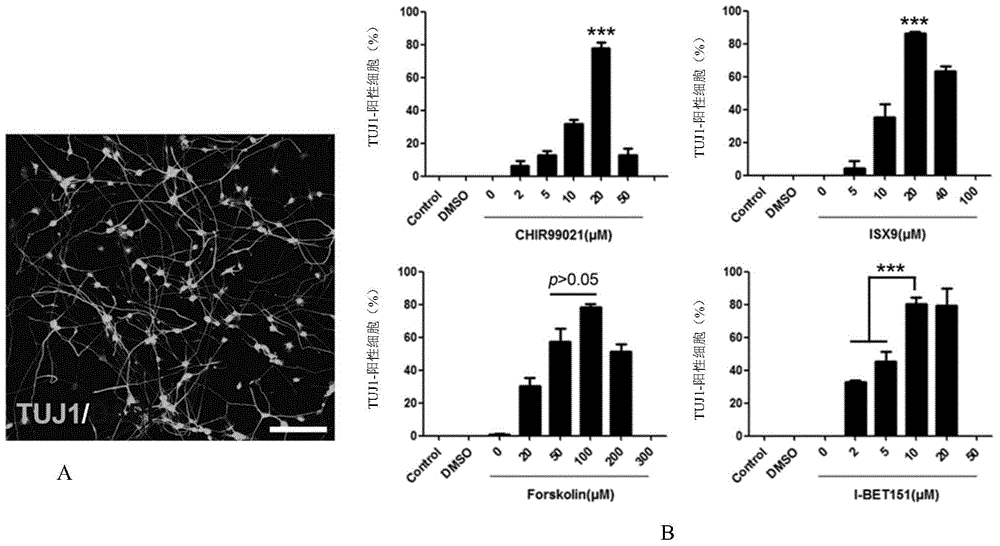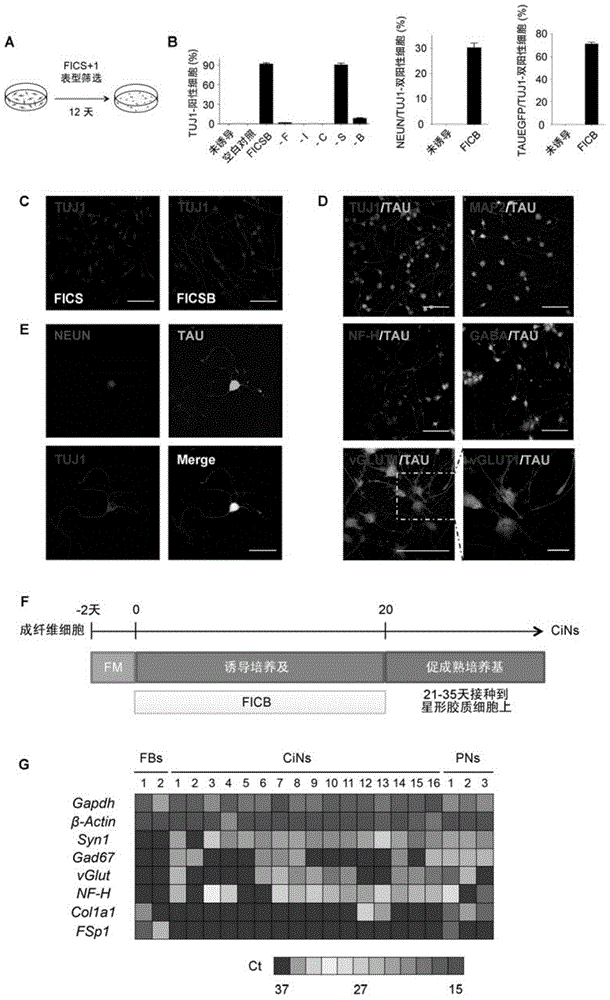Method and composition used for obtaining neuron-like cells from non-neuronal cells via reprogramming
A technology of neuron-like cells and neurons, applied in the field of biomedicine, can solve problems such as low efficiency, complicated technical operations and practicality
- Summary
- Abstract
- Description
- Claims
- Application Information
AI Technical Summary
Problems solved by technology
Method used
Image
Examples
Embodiment Construction
[0139] The present invention will be further described in detail below in conjunction with specific embodiments, and the given examples are only for clarifying the present invention, not for limiting the scope of the present invention. The materials and reagents used in the following examples can be obtained from commercial sources unless otherwise specified. The experimental methods in the following examples are conventional methods unless otherwise specified. The following cells were all stored at 37°C in 5% (volume percent) CO 2 cultivated in an environment. I-BET151 used in all experiments in this application refers to I-BET151 hydrochloride, referred to as B.
[0140] definition
[0141] "Agonist" refers to a substance that can significantly enhance the expression or activity of a certain gene. An agonist can enhance gene expression or activity by 10%, 20%, 30%, 40%, 50%, 60%, 70%, 80%, 90% or more compared to a control without agonist. In some cases, the expression ...
PUM
| Property | Measurement | Unit |
|---|---|---|
| molecular weight | aaaaa | aaaaa |
Abstract
Description
Claims
Application Information
 Login to View More
Login to View More - R&D
- Intellectual Property
- Life Sciences
- Materials
- Tech Scout
- Unparalleled Data Quality
- Higher Quality Content
- 60% Fewer Hallucinations
Browse by: Latest US Patents, China's latest patents, Technical Efficacy Thesaurus, Application Domain, Technology Topic, Popular Technical Reports.
© 2025 PatSnap. All rights reserved.Legal|Privacy policy|Modern Slavery Act Transparency Statement|Sitemap|About US| Contact US: help@patsnap.com



